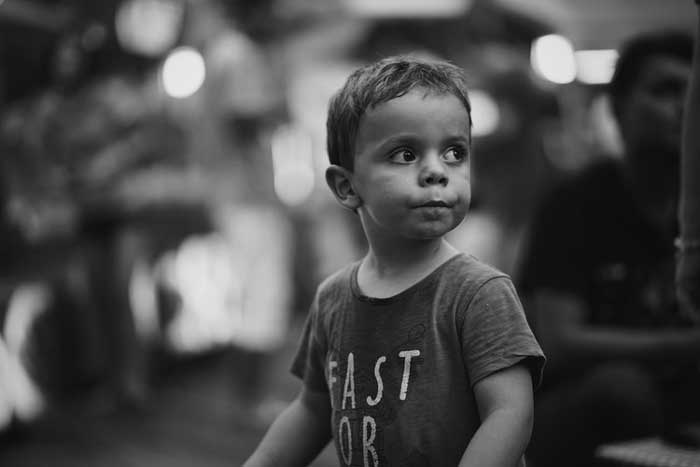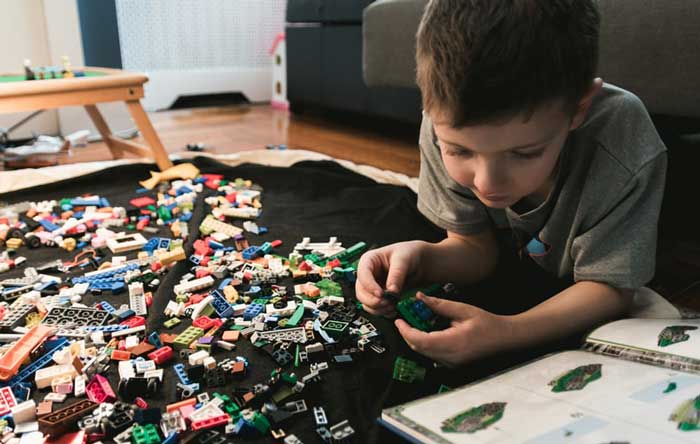Anxiety in Kids: Symptoms and Treatment Tips
Anxiety has been a useful part of human survival, warning us about a possible threat in advance, sending signals to the mind and the body that they may have to brace themselves to cope with a difficult situation. Also, we need to start generating adrenaline to be ready for the crucial moment.
Yet there are people, old and young, who tend to react uncommonly strongly to situations that seem to them fraught with danger, and since their feelings are more powerful, they are more difficult to control. Incidentally, the situations at hand appear more threatening than they really are.
So, anxiety can be quite normal?
Actually, children regularly display anxiety and fear, the more so if they run into a situation new for them. As a rule, they can be expected to get over their misgivings by themselves.
But at times they can do with outside support – especially when:
their anxiety exceeds the normal level of anxiety displayed by their peers
it occurs with a greater frequency compared to their pals and classmates
it hampers their doing things while other kids manage to carry out their tasks notwithstanding
they begin to fall out of school activities and social events
their worrying is not commensurate to what is happening to them in real life.
How can you detect excessive anxiety in your kids? Here are some obvious symptoms:
- they have difficulty concentrating
- they find it hard to fall asleep and are worried with troubled dreams
- have unhealthy eating habits
- become irate quickly and resist control during anxiety onsets
- don’t stop worrying and always thinking negatively
- are always uptight, fidgeting, going to the toilet oftener than it is usual
- are always on the verge of tears
- want to cling often
- say they feel unwell and have stomach aches frequently
Do anxiety disorders come in various kinds?
In children and teens anxiety can manifest itself differently – mainly as follows:
Generalized anxiety disorder (GAD). This condition is a constant cause of worrying over practically any sphere of kids’ lives – homework, projects, tests, public blunders. All children worry about these things periodically, although with various degrees of intensity.
But GAD-affected children get plunged deeper into worrying. One worry succeeds another, some of them are so quaint that parents would never guess they could be sources of worry! Kids may be afraid of getting hurt, afraid for their friends and family members. They may even be apprehensive of everyday activities like mounting the school bus, taking their lunch, or playing with pals.
Children suffering from GAD are unable to concentrate on their studies – which is but natural, since they are rarely free from worry. It interferes with their having fun, eating heartily and sleeping soundly. In severe cases children get so afraid and/or anxious that they can’t even attend school.
Gad-sufferers belong to two groups. Some worry in silence and refuse to open up; others discuss their worries unceasingly. They tend to ask adults if what they dread is likely to take place. When reassured that nothing bad will happen, they don’t believe it and keep asking.
Separation anxiety disorder (SAD). When very young ones get left alone while their parents go away to attend to their affairs, they are apt to feel anxious. With the passing of time this kind of anxiety is supposed to be wearing off, and kids don’t mind staying with babysitters or grandparents, later with teachers at school.
If a child fails to get over this anxiety, he or she is in for separation anxiety disorder. Growing older, they find that their anxiety springing up whenever parents leave them or when they are not at home wouldn’t go away. These kids might even grow very much upset or sick. Alternatively, they are likely to cling to their parents, wail and insist their parents should accompany them to school or to other places. When at home, they tend to follow parents about the house, unwilling to stay at a room alone, or they won’t go to sleep unless a parent is sitting by.
Social phobia (social anxiety disorder). Children can be very susceptible socially, fearful of possible bad opinions or scathing remarks from others. They think whatever they do is wrong, risible or embarrassing, and other people watch them to see when they make a blunder. They think they look peculiar and weird. When people direct their attention on them, they get flustered and uneasy. Such kids try to remain inconspicuous and never raise hands at lessons. When the teacher calls on them, they experience panic and refuse to answer. If a class activity is unfamiliar, it causes an even acuter fear.
So, children with social fobia will be increasingly avoiding school and being with friends. The very thought of going to school makes them sick and exhausted. There may even become evident other physical reactions – the heart begins to pound, the breath grows shallow. Children get fidgety and won’t stay still. They feel blood rush to the face, and when they stand up, they feel a-shake and dizzy.
Selective mutism (SM). Mutism is a severe case of social phobia that forces young ones to shut down and stay mum. Children who got SM are perfectly able to talk, and they can keep up conversations with parents and close friends. But away from home, when they are engulfed by fear, they just won’t speak. It may be very awkward in class.
Post-traumatic stress disorder (PTSD). Disorders can be triggered by traumatic events. Children witnessing a violent act, experiencing an accident or escaping a dangerous event find it difficult to live it down. They start to evince symptoms like poor concentration, irritablilty, broken sleep. They can be plagued by flashbacks that make them re-live the horror in their lives. Since the traumatic event doesn’t let them go, they can recreate it performing or drawing it.
Specifically centered phobias. Young ones have many things to be afraid of: angry animals, creatures lurking in the darkness, thunder, lightning, sudden sounds. Generally, when a child is afraid, grown-ups can calm them down. But if they are afflicted with a phobia, fears are lasting, intense, and unlikely to let up. Such a child goes in terror of what scares them and goes out of the way to avoid the object of their fear. Should they come in touch with it, they feel mortified and deaf to attempts to reassure them.
Specifically centered phobias put kids in fear of specific objects – certain animals or insects, spiders, blood, injections, darkness, thunder claps, anything. Children with these specific phobias shun places where they believe they could come across the fearsome object – they may expect to find spiders in every corner or receptacle, or they may refuse to go outside because beetles can crawl in the grass.
What factors unleash anxiety disorders?
When anxiety turns into an interfering disorder, it happens due to the function of several factors, the most prominent of which are:
Genes at work. Relatives suffering from anxiety disorder mean a higher risk of kids developing the same issue too. Anxiety-prone genes come down through generations.
Chemicals in the brain. Genes are responsible for the functioning of a group of brain chemicals known as neurotransmitters. Should they dysfunction or remain inactive, anxiety may set in.
Life events. If the kid’s life is full of situations that are stressful and strain his or her ability to cope, it can cause enhanced anxiety. Long illnesses, violence, death in the family, abusive outbreaks make children feel constantly anxious.
Imitative behavior. When the child sees anxious behavior in other members of the family, he or she learns to display the same symptoms as well.
How can anxious kids be helped?
First, consult your GP, either alone or with the kid attending; you can also consider sending the kid to keep the appointment alone. If it should prove the kid has a disorder, the doctor will come up with a suggestion for further measures – a visit to a specialist or an appeal to a mental health service for the young.
How can children with disorders be treated?
Treatment is generally determined on depending on the age oft he afflicted child and the type oft he affliction.
The child may need counselling to discover the roots of their anxiety and, probably, to teach them the right attitude to their fears and worries.
Sometimes the kid needs to work out the right behavior and understanding – it can be achieved by employing a special talking therapy known as Cognitive behavioural therapy (CBT).
In severe cases, or if the child fails to react to talking therapies, doctors may resort to medication. These must be prescribed by pediatricians specializing in mental issues and psychic problems.
How Can Parents Help?
Anxiety problems invariably mean that afflicted children don’t have enough self-confidence. Stressful situations press hard on them and render them helpless. They tend to go out of the way to avoid fearsome objects, which prevents their learning that their misgivings do not always come true. Parents‘ support and encouragement may go a long way towards strengthening their children’s belief in themselves.




